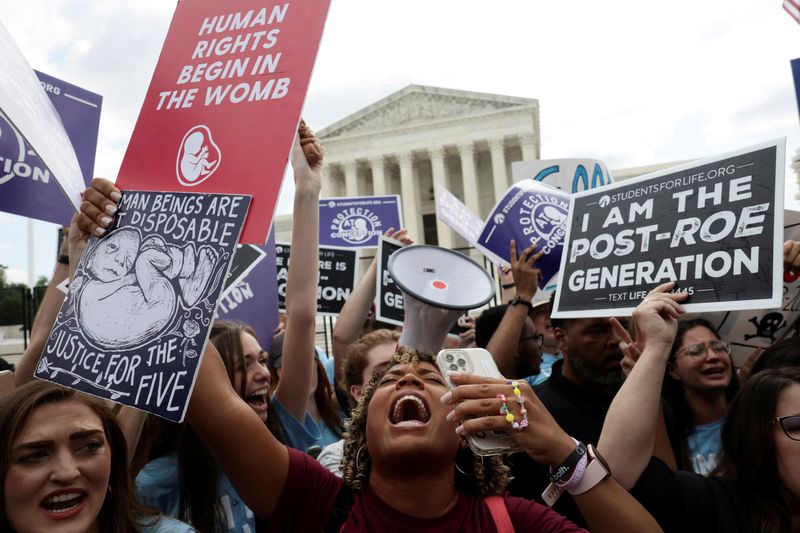Problem of abortion in U.S. transferred to 2023
2022.12.20 08:17
[ad_1]

Problem of abortion in U.S. transferred to 2023
Budrigannews.com – Due to a smattering of state court lawsuits and emergency court orders, the state of abortion rights across the nation remains unresolved six months after the U.S. Supreme Court overturned its 1973 Roe v. Wade decision.
Experts anticipate that the unpredictability will persist throughout the upcoming year as cases progress through the courts and state legislatures consider new restrictions, potentially establishing new battle lines in the dispute over abortion rights.
In light of the Supreme Court’s decision in Dobbs v. Jackson Women’s Health in June, it is anticipated that approximately half of all states will eventually enact new restrictions on abortion.
According to a Guttmacher Institute report from October, more than 20 million women of childbearing age have lost access to abortion.
According to those involved in the lawsuits and legal experts, the litigation has caused chaos for abortion providers and patients. While lawsuits are pending, emergency orders blocking the new bans have been issued by courts in state after state, only to be overturned on appeal weeks or even days later.
Kimberly Mutcherson, a professor and co-dean at Rutgers Law School who focuses on reproductive rights issues, stated, “On a day-to-day basis for people who are trying to provide abortions and people who are trying to get abortions it can be very complex.”
Restrictions have been blocked pending further review in eight of the 18 states where new or newly enforceable abortion bans have been challenged since Dobbs, including by high courts in some deeply conservative states like South Carolina and Indiana.
In 2023, nobody anticipates that all of the confusion will be resolved. However, the state-by-state battle over abortion will enter a new phase, potentially bringing long-awaited certainty to some issues and reopening others.
First, at least in some states, clarity will be provided as many of the pending lawsuits move beyond their initial emergency phase and onto final resolution in the state’s highest courts.
According to Mutcherson, although the emergency orders preventing some states from enforcing their bans may be a “good sign” for abortion providers, this does not necessarily mean that they will prevail in the end. She suggested that courts might also simply be acting cautiously when they face new legal issues.
She stated, “Part of what states have to do now, which they have not previously had to do because of this federal right (under Roe), is they have to think more deeply” about what their constitutions say about abortion.
At the emergency order stage, the majority of successful challenges have relied on specific language in state constitutions that guarantees a right to privacy or equal rights specifically for women—both of which are absent from the federal constitution.
A few moderate state councils will meet in 2023 interestingly since Dobbs. They could pass laws that penalize people or businesses that assist women in getting abortions, such as funding or assisting women in traveling to states where the procedure is legal or publishing information online, in addition to new abortion bans.
Katie Glenn, state policy director at the anti-abortion organization Susan B. Anthony Pro-Life America, stated, “I think we will see a lot of new and creative kinds of legislation, things I have not even considered.”
Anti-abortion organizations have filed a lawsuit in an effort to remove one of the drugs used in the procedure from the market. As a result, medication abortion has already become a battlefront.
In the upcoming year, there is likely to be more conflict over medication abortion, which accounts for more than half of all abortions in the United States. Following Dobbs, there was a surge in demand for international shipments of abortion pills, and conservative states may enact laws to restrict such shipments.
Since Dobbs, there are indications that abortion politics have changed. Democrats embraced the issue ahead of their unexpectedly strong performance in the midterm elections in November, portraying their opponents’ abortion measures as extreme, whereas Republicans have historically campaigned on the topic.
More U.S. preparing additional measures in law on financing
This year, anti-abortion ballot measures were rejected by voters in Kansas and Kentucky, and a special session of the South Carolina legislature failed to pass a near-total abortion ban last month. These results suggest that even in conservative states, the most stringent abortion measures may face political opposition.








